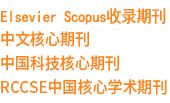| [1] |
Bevan S, Quallo T, Andersson D A. TRPV 1[J]. Handb. Exp. Pharmaco., 2014, 222: 207-245.
|
| [2] |
Frias B, Merighi A. Capsaicin, nociception and pain[J]. Molecules, 2016, 21 (6) : 797.
doi: 10.3390/molecules21060797
|
| [3] |
Moore C, Gupta R, Jordt S E, et al. Regulation of pain and itch by TRP channels[J]. Neuroscience Bulletin, 2018, 34 (1) : 120-142.
doi: 10.1007/s12264-017-0200-8
|
| [4] |
Olivier G, Killian L’Herondelle, Nicolas L, et al. TRPV1 and TRPA1 in cutaneous neurogenic and chronic inflammation: pro-inflammatory response induced by their activation and their sensitization[J]. Protein Cell, 2017, 8 (9) : 644-661.
doi: 10.1007/s13238-017-0395-5
pmid: 28364279
|
| [5] |
Adriana, Ehnis-Pérez, M D, et al. Relationship between transient receptor potential vanilloid-1 expression and the intensity of sensitive skin symptoms[J]. Journal of Cosmetic Dermatology, 2016, 15 (3) : 231-237.
doi: 10.1111/jocd.12204
pmid: 26695734
|
| [6] |
Heber S, Ciotu C I, Hartner G, et al. TRPV1 antagonist BCTC inhibits pH 6.0-induced pain in human skin[J]. Pain, 2020, 161 (7) : 1532-1541.
doi: 10.1097/j.pain.0000000000001848
|
| [7] |
Li D G, Yang D H, Schmaus G, et al. Inhibition of TRPV1 prevented skin irritancy induced by phenoxyethanol. A preliminary in vitro and in vivo study[J]. International Journal of Cosmetic Science, 2016, 39 (1) : 11-16.
doi: 10.1111/ics.12340
|
| [8] |
Inhibition of TRPV 1 for the treatment of sensitive skin[J]. Experimental Dermatology, 2010, 19 (11) : 980-986.
doi: 10.1111/j.1600-0625.2010.01122.x
|
| [9] |
Staender S. Sensitive skin - a global challenge with upcoming solutions[J]. Journal of the European Academy of Dermatology and Venereology: JEADV, 2016.
|
| [10] |
Caterina M, Pang Z. TRP channels in skin biology and pathophysiology[J]. Pharmaceuticals, 2016, 9 (4) : 77.
doi: 10.3390/ph9040077
|
| [11] |
Talagas M, Misery L. Role of keratinocytes in sensitive skin[J]. Frontiers in Medicine, 2019, 6: 108.
doi: 10.3389/fmed.2019.00108
|
| [12] |
Misery L, Staender, et al. Sensitive skin[J]. Journal of the European Academy of Dermatology & Venereology Jeadv, 2016, 30(Suppl. 1): 2-8.
|
| [13] |
Bujak J K, Kosmala D, Szopa I M, et al. Inflammation, cancer and immunity-implication of TRPV1 channel[J]. Frontiers in Oncology, 2019, 9: 1087.
doi: 10.3389/fonc.2019.01087
|
| [14] |
Gouin O, L’Herondelle K, Lebonvallet N, et al. TRPV1 and TRPA1 in cutaneous neurogenic and chronic inflammation: pro-inflammatory response induced by their activation and their sensitization[J]. Protein Cell, 2017, 8 (9) : 644-661.
doi: 10.1007/s13238-017-0395-5
|
| [15] |
Schneider A, Batisti A P, Turnes B L, et al. Anti-hyperalgesic properties of ethanolic crude extract from the peels of Citrus reticulata (Rutaceae)[J]. Anais da Academia Brasileira de Ciências, 2020, 92 (1) : 20180793.
|
| [16] |
Alghamdi S. Antinociceptive effect of the Citrus flavonoid eriocitrinon postoperative pain conditions[J]. Journal of Pain Research, 2020, 13: 805-815.
doi: 10.2147/JPR.S250391
pmid: 32368133
|
| [17] |
Iannitti T, Cerbo A D, Loschi A R, et al. Repeated administration of a flavonoid-based formulated extract from citrus peels significantly reduces peripheral inflammation-induced pain in the rat[J]. Food Science & Nutrition, 2020, 8 (7) : 3173-3180.
|
| [18] |
Manchope M F, Casagrande R, Verri W A. Naringenin: an analgesic and anti-inflammatory citrus flavanone[J]. Oncotarget, 2016, 8 (3) : 3766-3767.
doi: 10.18632/oncotarget.14084
|
| [19] |
Straub I, Mohr F, Stab J, et al. Citrus fruit and fabacea secondary metabolites potently and selectively block TRPM3[J]. British Journal of Pharmacology, 2013, 168 (8) : 1835-1850.
doi: 10.1111/bph.12076
pmid: 23190005
|
| [20] |
Li S, Chen W, Chen S, et al. Construction of RHBDF2-shRNA lentiviral vector and establishment of stably transfected Neuro-2a-RHBDF2-shRNA cell line[J]. Journal of Jilin University (Medicine Edition), 2019, 45 (6) : 1224-1230.
|
| [21] |
Fan Y, Jie Z. Understand spiciness: mechanism of TRPV1 channel activation by capsaicin[J]. Protn & Cell, 2017, 8 (3) : 169-177.
|
| [22] |
Li D G, Yang D H, Schmaus G, et al. Inhibition of TRPV1 prevented skin irritancy induced by phenoxyethanol. A preliminary in vitro and in vivo study[J]. International Journal of Cosmetic Science, 2016, 39 (1) : 11-16.
doi: 10.1111/ics.12340
|
| [23] |
Hohjoh H, Inazumi T, Tsuchiya S, et al. Prostanoid receptors and acute inflammation in skin[J]. Biochimie, 2014, 107: 78-81.
doi: 10.1016/j.biochi.2014.08.010
|
| [24] |
Kawabata A. Prostaglandin E2 and pain: an update[J]. Biological & Pharmaceutical Bulletin, 2011, 34 (8) : 1170-1173.
|
| [25] |
Ma W, Li L, Xing S. PGE2/EP4 receptor and TRPV1 channel are involved in repeated restraint stress-induced prolongation of sensitization pain evoked by subsequent PGE2 challenge[J]. Brain Research, 2019, 1721: 146335.
doi: 10.1016/j.brainres.2019.146335
|
| [26] |
Rohm B, Holik A K, Somoza M M, et al. Nonivamide, a capsaicin analog, increases dopamine and serotonin release in SH-SY5Y cells via a TRPV1-independent pathway[J]. Molecular Nutrition & Food Research, 2013, 57 (11) : 2008-2018.
|



 ),Liu Qing
),Liu Qing